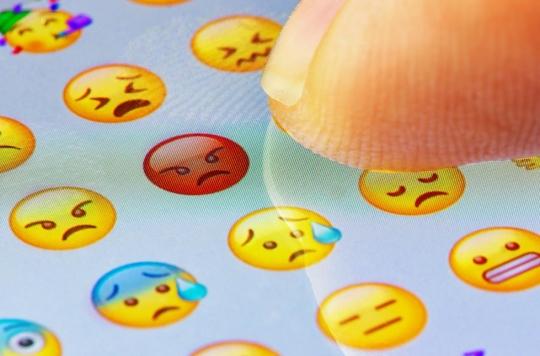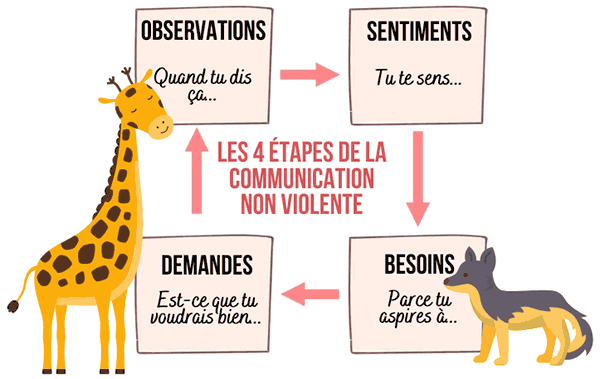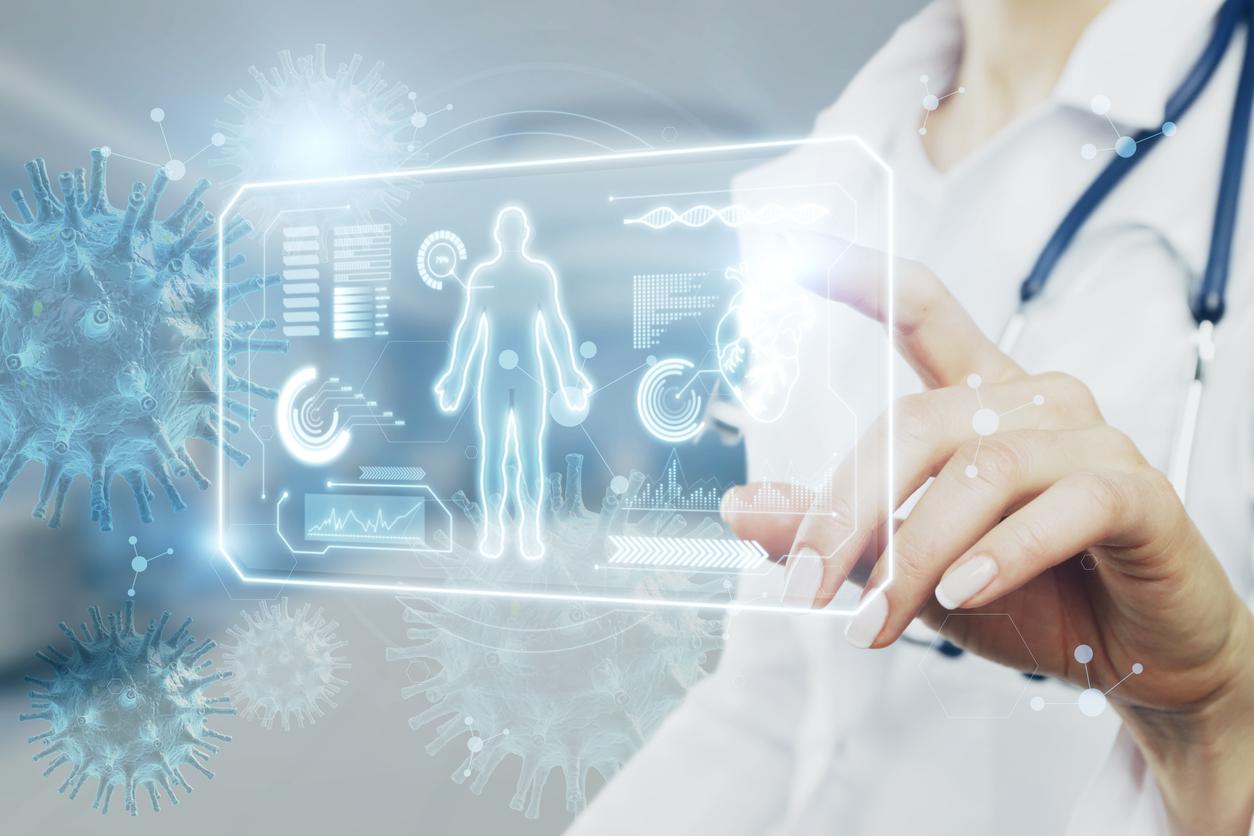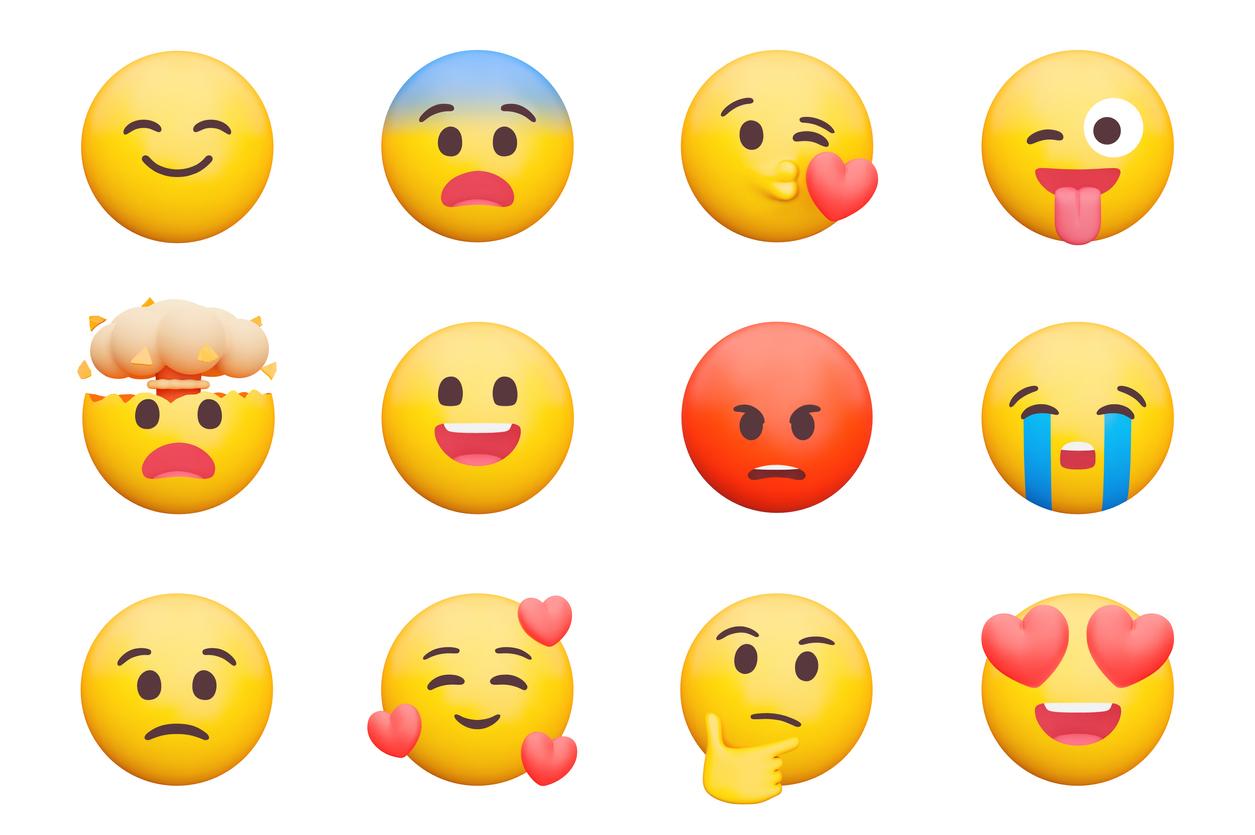Having become essential in online discussions or by SMS, emoji could also prove to be a valuable tool in the field of medicine, by allowing patients to better communicate their symptoms and concerns.

- Among the 3,500 existing emoji, 45 are dedicated to medicine: a syringe, a stetoscope, a bone…
- Doctors are now pleading for the generalization of their use in the medical context in order to better communicate with patients about their symptoms, their emotions or the pain they feel.
A laughing yellow face, another angry, another with hearts instead of eyes… These emoji, everyone knows them. Born in Japan more than ten years ago, these image characters (the meaning of the word “emoji”) are now present in almost every online discussion and on social networks: 5 billion of them are used daily on Facebook and Facebook Messenger only.
But beyond their fun aspect, these emoji could also become a real communication tool between doctors and their patients. In any case, this is what researchers at Massachusetts General Hospital (MGH) believe. In a comment published in the Journal of the American Medical Association (JAMA)they advocate for each medical discipline to create and adopt its own unique set of iconography to better reflect the needs of patients.
“The need to listen to patients is central to our mission as physicians, and the use of emoji is a great opportunity to take communication to another level.says emergency physician and lead author Shuhan He. Emoji could be particularly important for treating children whose language skills are still developing, people with disabilities that impair their ability to communicate, and the many patients who speak another language.”
45 medical emoji to communicate better through images
Today there are about 3,500 emoji listed by the Unicode Consortium, but only about 45 emoji can be considered relevant to medicine. The first, introduced in 2015, were the syringe and the pill. In 2017, Apple added emoji to represent people with disabilities, followed by stethoscope, bone, tooth, and germ symbols in 2019. In 2020, anatomical heart and lung emoji were introduced.
“It’s tempting to think of emoji as a millennial fad, but they possess the power of standardization, universality, and familiarity, and in the hands of doctors and other healthcare providers, they could represent a new and very effective way of communicating through images with patients”says Dr. He.
For example, in medical emergencies where time is at a premium, emoji could enable a “point and tap” form of communication that would facilitate important clinical decisions. These symbols could also serve as annotations to hospital discharge instructions, which are often confusing or even incomprehensible to some patients.
In addition, adds the researcher, the recent growth of telemedicine could be a rich opportunity for emoji to make inroads in the medical field, by allowing patients to transmit information to healthcare professionals about the intensity of the pain they are experiencing. ‘they feel.
Dr. Shuhan He continues his research on emoji. He would now like to add 15 more medical-related emojis to help patients and doctors communicate about pain mobility, mood, duration and quality. “It is clear that emoji have become part of the global and general conversation, and that medical societies and doctors’ committees and organizations need to take them seriously. Which means they should determine now which emoji would serve best interests of their patients, build consensus around the medical accuracy of these emoji, then work to get them approved by the global standards body and work on the long process of adaptation and implementation.”he concludes.
.














